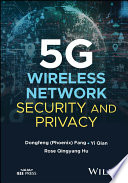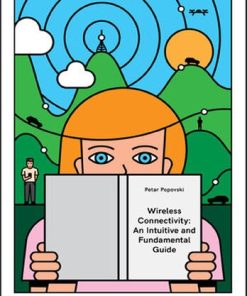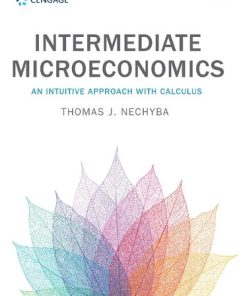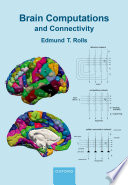Wireless connectivity an intuitive and fundamental guide 1st edition by Petar Popovski 9781119577003 0470683996
$50.00 Original price was: $50.00.$25.00Current price is: $25.00.
Wireless connectivity an intuitive and fundamental guide 1st edition by Petar Popovski – Ebook PDF Instant Download/Delivery:9781119577003, 0470683996
Full download Wireless connectivity an intuitive and fundamental guide 1st edition after payment
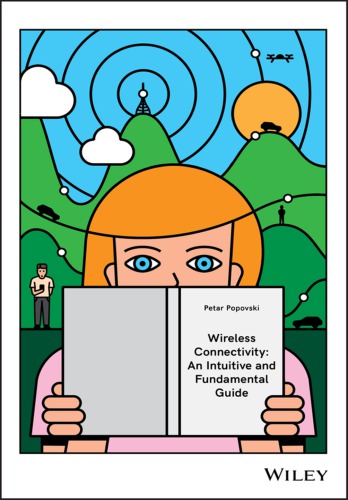
Product details:
ISBN 10: 0470683996
ISBN 13: 9781119577003
Author: Petar Popovski
Wireless Connectivity: An Intuitive and Fundamental Guide Wireless connectivity has become an indispensable part, a commodity associated with the way we work and play. The latest developments, the 5G, next-generation Wi-Fi and Internet of Things connectivity, are the key enablers for widespread digitalization of practically all industries and public sector segments. This immense development within the last three decades have been accompanied by a large number of ideas, articles, patents, and even myths. This book introduces the most important ideas and concepts in wireless connectivity and discusses how these are interconnected, whilst the mathematical content is kept minimal. The book does not follow the established, linear structure in which one starts from the propagation and channels and then climbs up the protocol layers. The structure is, rather, nonlinear, in an attempt to follow the intuition used when one creates a new technology to solve a certain problem. The target audience is: Students in electronics, communication, and networking Wireless engineers that are specialized in one area, but want to know how the whole system works, without going through all the details and math Computer scientists that want to understand the fundamentals of wireless connectivity, the requirements and, most importantly, the limitations Engineers in energy systems, logistics, transport and other vertical sectors that are increasingly reliant on wireless technology
Wireless connectivity an intuitive and fundamental guide 1st Table of contents:
1. An Easy Introduction to the Shared Wireless Medium
1.1 How to Build a Simple Model for Wireless Communication
1.2 The First Contact
1.3 Multiple Access with Centralized Control
1.4 Making TDMA Dynamic
1.5 Chapter Summary
1.6 Further Reading
1.7 Problems and Reflections
2. Random Access: How to Talk in a Crowded Dark Room
2.1 Framed ALOHA
2.2 Probing
2.3 Carrier Sensing
2.4 Random Access and Multiple Hops
2.5 Chapter Summary
2.6 Further Reading
2.7 Problems and Reflections
3. Access Beyond the Collision Model
3.1 Distance Gets into the Model
3.2 Simplified Distance Dependence: A Double Disk Model
3.3 Downlink Communication with the Double Disk Model
3.4 Uplink Communication with the Double Disk Model
3.5 Unwrapping the Packets
3.6 Chapter Summary
3.7 Further Reading
3.8 Problems and Reflections
4. The Networking Cake: Layering and Slicing
4.1 Layering for a One-Way Link
4.2 Layers and Cross-Layer
4.3 Reliable and Unreliable Service from a Layer
4.4 Black Box Functionality for Different Communication Models
4.5 Standard Layering Models
4.6 An Alternative Wireless Layering
4.7 Cross-Layer Design for Multiple Hops
4.8 Slicing of the Wireless Communication Resources
4.9 Chapter Summary
4.10 Further Reading
4.11 Problems and Reflections
5. Packets Under the Looking Glass: Symbols and Noise
5.1 Compression, Entropy, and Bit
5.2 Baseband Modules of the Communication System
5.3 Signal Constellations and Noise
5.4 From Bits to Symbols
5.5 Symbol-Level Interference Models
5.6 Weak and Strong Signals: New Protocol Possibilities
5.7 How to Select the Data Rate
5.8 Superposition of Baseband Symbols
5.9 Communication with Unknown Channel Coefficients
5.10 Chapter Summary
5.11 Further Reading
5.12 Problems and Reflections
6. A Mathematical View on a Communication Channel
6.1 A Toy Example: The Pigeon Communication Channel
6.2 Analog Channels with Gaussian Noise
6.3 The Channel Definition Depends on Who Knows What
6.4 Using Analog to Create Digital Communication Channels
6.5 Transmission of Packets over Communication Channels
6.6 Chapter Summary
6.7 Further Reading
6.8 Problems and Reflections
7. Coding for Reliable Communication
7.1 Some Coding Ideas for the Binary Symmetric Channel
7.2 Generalization of the Coding Idea
7.3 Linear Block Codes for the Binary Symmetric Channel
7.4 Coded Modulation as a Layered Subsystem
7.5 Retransmission as a Supplement to Coding
7.6 Chapter Summary
7.7 Further Reading
7.8 Problems and Reflections
8. Information-Theoretic View on Wireless Channel Capacity
8.1 It Starts with the Law of Large Numbers
8.2 A Useful Digression into Source Coding
8.3 Perfectly Reliable Communication and Channel Capacity
8.4 Mutual Information and Its Interpretations
8.5 The Gaussian Channel and the Popular Capacity Formula
8.6 Capacity of Fading Channels
8.7 Chapter Summary
8.8 Further Reading
8.9 Problems and Reflections
9. Time and Frequency in Wireless Communications
9.1 Reliable Communication Requires Transmission of Discrete Values
9.2 Communication Through a Waveform: An Example
9.3 Enter the Frequency
9.4 Noise and Interference
9.5 Power Spectrum and Fourier Transform
9.6 Frequency Channels, Finally
9.7 Code Division and Spread Spectrum
9.8 Chapter Summary
9.9 Further Reading
9.10 Problems and Reflections
10. Space in Wireless Communications
10.1 Communication Range and Coverage Area
10.2 The Myth about Frequencies that Propagate Badly in Free Space
10.3 The World View of an Antenna
10.4 Multipath and Shadowing: Space is Rarely Free
10.5 The Final Missing Link in the Layering Model
10.6 The Time-Frequency Dynamics of the Radio Channel
10.7 Two Ideas to Deal with Multipath Propagation and Delay Spread
10.8 Statistical Modeling of Wireless Channels
10.9 Reciprocity and How to Use It
10.10 Chapter Summary
10.11 Further Reading
10.12 Problems and Reflections
11. Using Two, More, or a Massive Number of Antennas
11.1 Assumptions about the Channel Model and the Antennas
11.2 Receiving or Transmitting with a Two-Antenna Device
11.3 Introducing MIMO
11.4 Multiple Antennas for Spatial Division of Multiple Users
11.5 Beamforming and Spectrum Sharing
11.6 What If the Number of Antennas Is Scaled Massively?
11.7 Chapter Summary
11.8 Further Reading
11.9 Problems and Reflections
12. Wireless Beyond a Link: Connections and Networks
12.1 Wireless Connections with Different Flavors
12.2 Fundamental Ideas for Providing Wireless Coverage
12.3 No Cell Is an Island
12.4 Cooperation and Coordination
12.5 Dissolving the Cells into Clouds and Fog
12.6 Coping with External Interference and Other Questions about the Radio Spectrum
12.7 Chapter Summary
12.8 Further Reading
12.9 Problems and Reflections
Bibliography
People also search for Wireless connectivity an intuitive and fundamental guide 1st:
wireless connectivity an intuitive and fundamental guide pdf
wireless intuitive probing system
wireless communications from fundamentals to beyond 5g pdf
wireless connectivity
Tags:
Petar Popovski,Wireless connectivity,intuitive
You may also like…
Computers - Networking
Business & Economics
Microeconomics: An Intuitive Approach with Calculus 2nd Edition Thomas Nechyba
Biology and other natural sciences
Chemistry - Analytical Chemistry
Politics & Philosophy
Faith, Reason, and Culture: An Essay in Fundamental Theology 1st Edition
Business & Economics - Economics
Biology and other natural sciences - Human Biology
Brain Computations and Connectivity Edmund T. Rolls 2nd edition




